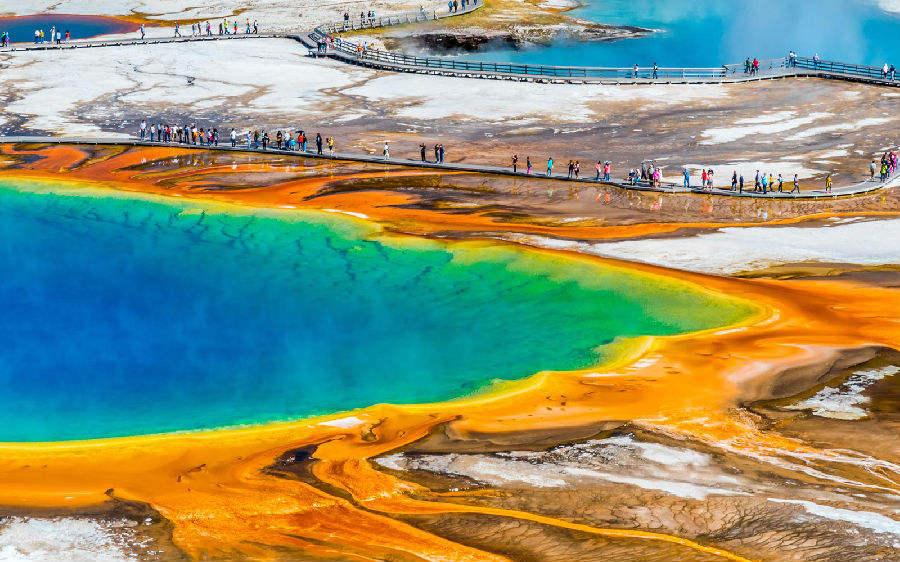(单词翻译:单击)
Evacuating Yellowstone would never be easy. The park gets some three million visitors a year, mostly in the three peak months of summer. The park's roads are comparatively few and they are kept intentionally narrow, partly to slow traffic, partly to preserve an air of picturesqueness, and partly because of topographical constraints. At the height of summer, it can easily take half a day to cross the park and hours to get anywhere within it. "Whenever people see animals, they just stop, wherever they are," Doss says. "We get bear jams. We get bison jams. We get wolf jams."
撤离黄石公园不会是一件容易的事。公园每年吸引着大约300万名游客,主要是在夏季3个月的高峰期。公园里道路较少,故意修得很窄,一方面是为了减慢车辆速度,另一方面是为了保护自然美,再一方面是因为受到地形条件的限制。在盛夏季节,花半天时间就能轻松地穿越公园,花几个小时就能抵达公园的任何地方。“人们一看到动物就停下来,无论在哪里,”多斯说,“我们这儿有熊群,有野牛群,有狼群。”
In the autumn of 2000, representatives from the U.S. Geological Survey and National Park Service, along with some academics, met and formed something called the Yellowstone Volcanic Observatory. Four such bodies were in existence already—in Hawaii, California, Alaska, and Washington—but oddly none in the largest volcanic zone in the world. The YVO is not actually a thing, but more an idea—an agreement to coordinate efforts at studying and analyzing the park's diverse geology. One of their first tasks, Doss told me, was to draw up an "earthquake and volcano hazards plan"—a plan of action in the event of a crisis.
2000年秋,美国地质局和国家公园管理处的代表以及几名学者开了一次会,成立了所谓的黄石火山观察所。这样的机构全国已经有4个——分别在夏威夷、加利福尼亚、阿拉斯加和华盛顿。但说来也怪,在世界上最大的火山区却没有。黄石火山观察所与其说是一个机构,不如说是一种打算——一项协议,大家同意协调一致,研究和分析公园里多种多样的地质情况。多斯对我说,它的第一批任务之一是制订一个“地震和火山喷发应急计划”——即,一个危机时刻的行动计划。
There isn't one already? I said.
“已经有了一个?”我问。
No. Afraid not. But there will be soon.
“没有。恐怕没有。但很快会有。”
Isn't that just a little tardy?
“是不是晚了点?”
He smiled. "Well, let's just say that it's not any too soon."
他微微一笑:“哎呀,我们这样说吧,不算太晚。”


